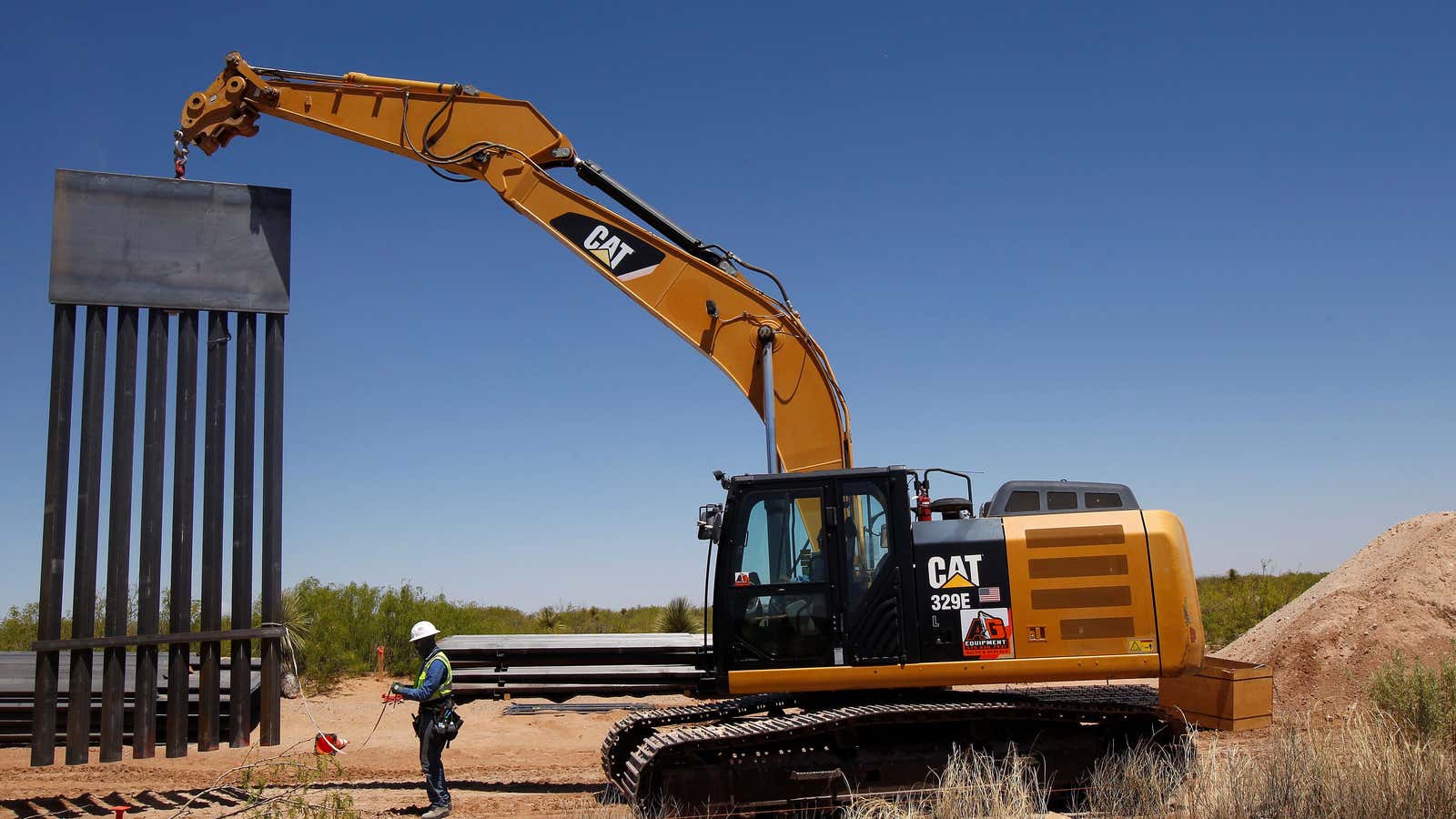It was just a week ago that Donald Trump proclaimed he would be “proud” to shut down the government by Dec. 21 if he didn’t get money from Congress to build the border wall with Mexico he promised voters.
Today (Dec. 18), the White House said that wasn’t the case, after all.
Instead, the president is willing to sign a spending bill this week to prevent a shutdown, press secretary Sarah Huckabee Sanders told reporters. In the meantime, the White House is “looking at existing funding from other agencies we can draw from,” to build the wall “immediately,” she said. The White House isn’t asking taxpayers for the funds, as Sanders put it, adding that it is possible that the USMCA (the re-branded North American Free Trade Agreement) would “provide additional revenue” that could be used for a wall.
None of this makes any logical sense.
Any funds from any other agencies, whether they’re from the Department of Defense or the White House’s budget for Christmas decorations, come from US taxpayers, whether companies or individuals. That’s how the US government is funded. And any additional “revenue” American companies earn if the USMCA treaty passes Congress (it has not been approved yet) belongs to the companies, not the US government. And it’s unlikely Trump would increase taxes on US corporations to pay for it, after passing a massive corporate tax cut his first year in office.
Sanders’ nonsensical explanation for Trump’s backtracking is the latest proof that Trump doesn’t really want a border wall, after all.
Trump already got an attractive bipartisan offer for $25 billion in funding for border security, including for building a physical wall, this February, as Quartz reported earlier. But his administration deliberately blew it, when the Department of Homeland Security brought a bill on immigration to a screeching halt with a late-night, politically charged memo.
The White House could also have quietly, rationally made concessions earlier in this “negotiating” round to get some funding for the wall in the Department of Homeland Security’s $50-billion budget, congressional aides say. Instead, Trump staged a showy fight with incoming speaker of the House Nancy Pelosi and Senate minority leader Chuck Schumer that only galvanized opposition in Congress. Then he sent his toxic anti-immigrant advisor Stephen Miller out on television to make demands Democrats would never agree to.
Trump’s negotiation “strategy,” whether on trade deals or with Congress, has a familiar pattern—threaten the opposition loudly, and then backtrack. But the unbuilt wall plays a special role. It has become a metaphorical tool, a cudgel that the Trump administration—and the Trump 2020 political-action committee that’s amassed $100 million in donations for his next presidential run—believe they desperately need to keep around so they can beat Democrats with it.
Immigrants coming across the US’s southern border remain at near-historical lows and they commit crimes at lower rates than native-born population. Yet Republicans more than doubled spending on anti-immigrant ads in the 2018 midterms vs. four years ago, a Reuters analysis shows.
If Trump got funding for the wall from Congress, he wouldn’t be able to accuse Democrats of wanting “open borders” any longer, and would need to start working with them instead.
